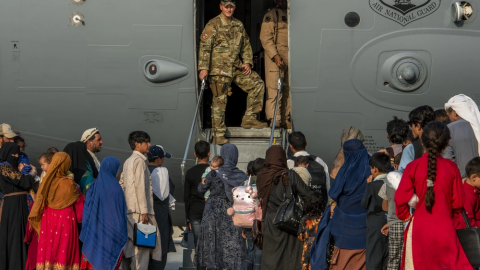Since the Taliban returned to power there has been no shortage of crises facing Afghanistan.
A humanitarian disaster is affecting millions of Afghans. Food insecurity is a major concern. Young girls are not allowed into schools. Transnational terrorist groups are operating across most of the country with impunity. Ethnic and religious minorities are routinely under attack.
However, there is another problem with Afghanistan that deserves more attention. After entering Kabul in August 2021, the Taliban promised not to seek retribution against those who fought for the Afghan government or supported international forces over the years. Unsurprisingly, they have not lived up to this commitment. For example, according to the UN Assistance Mission in Afghanistan: “Between Aug. 15, 2021,and June 30, 2023, the country’s de facto authorities were responsible for 218 extrajudicial killings, 14 enforced disappearances, over 144 instances of torture and ill treatment, and 424 arbitrary arrests and detentions.”
The US has not lived up to its commitments either. It left tens of thousands of Afghan partners at risk in Afghanistan after promising to get them out of the country. When the Taliban took over President Joe Biden said: “We’re going to do everything, everything that we can, to provide safe evacuation for our Afghan allies, partners, and Afghans who might be targeted because of their association with the United States … the United States stands by the commitment it made to these people.” Leading up to the withdrawal, US military chief Gen. Mark Milley said: “We must remain faithful to those Afghans who risked their lives to help the United States troops and personnel.”
During the chaos of 2021, it is estimated that the US brought only 124,000 Afghan partners out of the country. Of these, only 90,000 have since made it to the US. The rest are in third countries such as Qatar. Of these, only 21,000 have been issued a special immigrant visa that provides much-needed clarity on their legal status and right to remain and work in the US.
The remaining Afghans are in the US under a process known as humanitarian parole. This is authorized by the Department of Homeland Security and allows Afghans to legally reside in the US while their visa applications are considered. Because Congress has failed to pass legislation to offer a faster way to make the status of Afghans in the US permanent, any new president can remove the humanitarian parole with a stroke of a pen. This leaves tens of thousands of Afghans who escaped Taliban rule in a state of legal limbo.
According to the State Department’s inspector general, Diana Shaw, another 152,000 visa applicants are still in Afghanistan. Including family members, the total number of Afghans eligible to come to the US is in the hundreds of thousands. In addition to the visa applicants, there are also tens of thousands of more Afghans who helped the US but do not qualify for protection.
For example, between 20,000 and 30,000 Afghan special forces remain in Afghanistan. Some have joined resistance groups such as the National Resistance Front of Afghanistan. Most are in hiding.
There are also thousands of Afghan prosecutors who were trained by the US and its allies over the years, and fear for their lives in Taliban-controlled Afghanistan. It is thought that more than 50,000 Taliban members were prosecuted and imprisoned over the years. Now the lawyers, magistrates and judges who administered that judicial system face retribution from the Taliban.
Finally, several thousand journalists in Afghanistan fear for their lives. Within a year of the Taliban takeover, 60 percent of the nearly 12,000 Afghan journalists had ceased operating in the country.
In addition to America’s promise to help its Afghan partners, there are practical benefits for the US in doing so. For example, according to the NGOs Upwardly Global and Evacuate Our Allies, more than 10,000 Afghans brought to the US are thought to have at least a college education. It is estimated that 28.5 percent of these have master’s degrees, and 5.8 percent have advanced medical training. The same report estimated the potential annual earnings of Afghan newcomers to the US at $1.71 billion. This sum could generate $227 million a year in federal tax revenue annually. Afghans brought to America could also provide indirect humanitarian aid in the form of remittances to Afghanistan. At their height in 2019, personal remittances sent to Afghanistan comprised 4.4 percent of the country’s GDP.
In December 2021, despite economic sanctions against the Taliban, the US Treasury Department issued a general license authorizing banking transactions allowing Afghans in the US to send remittances home. With more Afghans earning money in the US and sending remittances back to Afghanistan, this could play a part in alleviating the dire humanitarian situation there.
When the US retreated from Afghanistan, it left behind an estimated $7 billion in military equipment. There has been a lot of media attention on this in the US. Since 2021 most of this kit has fallen into the hands of the Taliban or ended up on the black market around the region. However, this hefty price tag pales in comparison to the moral cost of leaving behind tens of thousands of Afghans who sacrificed so much over 20 years. Where is the media outcry regarding this?
The US needs to honor its commitments.















